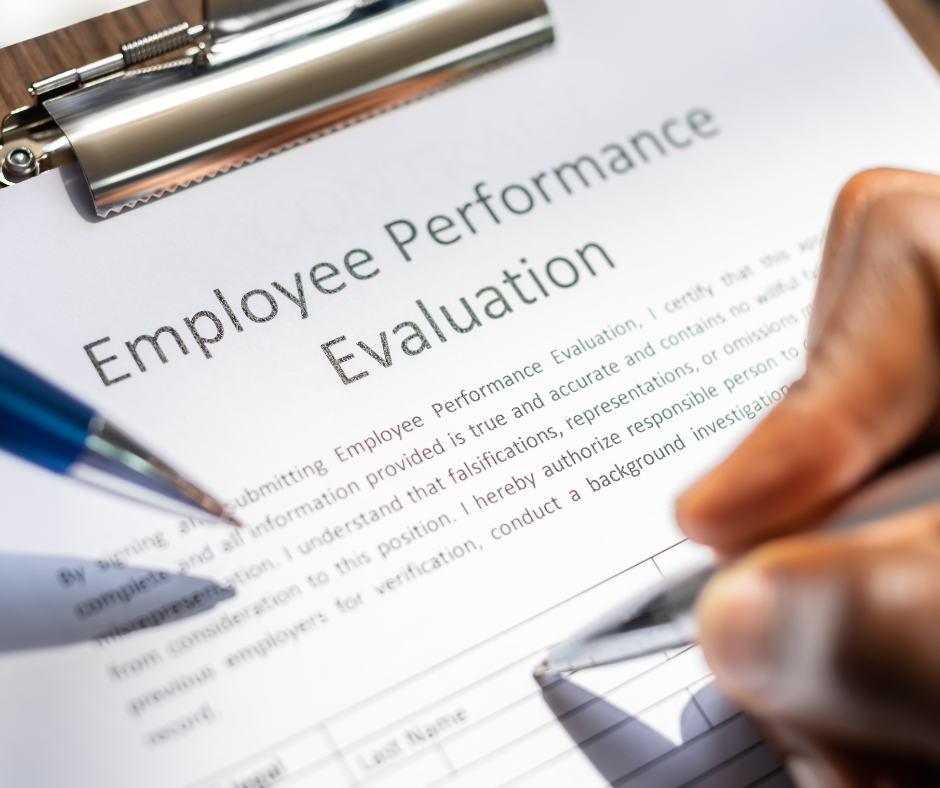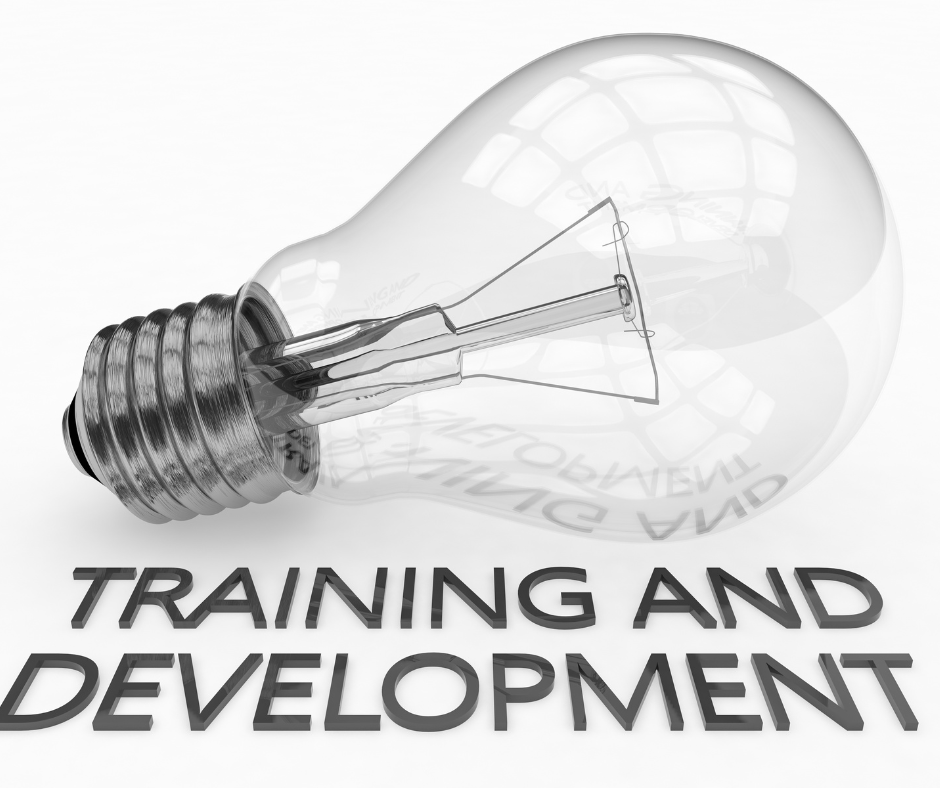
From Recruitment to Retirement: The HR Policy List
Effective human resources management is vital for organizations to attract, develop, and retain a talented workforce. This comprehensive HR policy list covers various crucial aspects of the employee lifecycle. Covering everything from recruitment and onboarding to retirement and offboarding, these policies provide a framework for consistent and fair treatment of employees.
Recruitment and Onboarding Policies:
– Job Posting and Advertisement: Guidelines for creating and posting job vacancies to attract suitable candidates.
– Application and Resume Screening: Procedures for reviewing and shortlisting applications to identify potential candidates.
– Interviewing and Selection Process: Standardized methods for conducting interviews and selecting candidates.
– Offer and Contract Negotiation: Protocols for making job offers and negotiating terms of employment.
– Onboarding and Orientation: Policies for welcoming new employees, introducing them to the company culture, and providing necessary training.
Employee Performance and Evaluation Policies:
– Performance Expectations and Goals: Setting clear performance expectations and goals for employees.
– Performance Evaluation Methods: Establishing evaluation methods to assess employee performance and provide feedback.
– Feedback and Performance Improvement Plans: Processes for providing feedback, identifying areas for improvement, and creating performance improvement plans.
Training and Development Policies:
– Training Needs Assessment: Assessing the training needs of employees to enhance their skills and knowledge.
– Training Programs and Workshops: Offering various training programs and workshops to help employees grow professionally.
– Professional Development Opportunities: Providing opportunities for employees to enhance their skills and advance their careers.
Compensation and Benefits Policies:
– Salary and Wage Structure: Establishing a fair and competitive compensation structure.
– Employee Benefits and Perks: Outlining the benefits and perks employees are entitled to.
– Bonus and Incentive Programs: Establishing programs to recognize and reward employee performance.
Leave and Time-Off Policies:
– Vacation and Paid Time-Off: Defining policies regarding vacation days and paid time-off.
– Sick Leave and Medical Absences: Guidelines for employees taking sick leave or medical absences.
– Family and Parental Leave: Policies regarding leave for family-related matters, including parental leave.
Employee Discipline and Termination Policies:
– Code of Conduct and Disciplinary Actions: Outlining expected standards of behavior and the disciplinary actions for non-compliance.
– Grievance and Complaint Handling: Procedures for addressing employee grievances and complaints.
– Termination and Exit Procedures: Guidelines for terminating employment contracts and handling employee exits.
Retirement and Offboarding Policies:
– Retirement Plans and Options: Providing information on retirement plans and options.
Recruitment and Onboarding Policies
Recruitment and onboarding policies are essential for ensuring a smooth and efficient process of attracting and integrating new employees into an organization. The following are key policies that organizations should consider:
- Equal Employment Opportunity: This policy ensures that all candidates are treated fairly and prohibits discrimination based on factors such as race, gender, age, religion, or disability.
- Job Posting and Advertising: This policy outlines the procedures for posting job vacancies internally and externally, including the mediums and channels used for advertising.
- Recruitment Process: A clear and well-defined process for recruitment in a human resources manual includes steps such as application screening, interviews, reference checks, and background checks, helps maintain consistency and fairness.
- Selection Criteria: This policy defines the qualifications, skills, and experience required for a particular job. It ensures that hiring decisions are based on objective criteria and relevant factors.
- Interviewing Guidelines: Guidelines for conducting interviews, including question templates, interview panels, and evaluation criteria, help ensure consistency and professionalism throughout the hiring process.
- Offer and Employment Terms: This policy outlines the process of making job offers, including salary and benefits negotiation, employment contracts, and any other terms and conditions of employment.
- Pre-Employment Checks: Policies regarding pre-employment checks, such as background checks, drug tests, and reference verifications, help ensure that the organization hires candidates with the necessary integrity and qualifications.
- Onboarding and Orientation: This policy focuses on integrating new employees into the organization effectively. It includes procedures for orientation programs, training, and assigning mentors to help new hires acclimate to their roles and the company culture.
- Probationary Period: This policy outlines the duration and expectations during the probationary period for new employees. It clarifies the criteria for assessing performance and the process for extending or terminating employment.
- Documentation and Record Keeping: Policies regarding the maintenance of recruitment-related documents and records ensure compliance with legal requirements and provide a historical reference for future needs.
By implementing comprehensive recruitment and onboarding policies, organizations can attract top talent, promote fairness, and set new employees up for success from the beginning of their employment journey.

Employee Performance and Evaluation Policies
Effective employee performance and evaluation policies are crucial for maintaining a productive and motivated workforce. Here are key elements to consider:
- Clear Performance Expectations: Clearly define performance expectations and communicate them to employees. This includes outlining job responsibilities, performance goals, and any specific metrics or targets.
- Regular Feedback: Implement a system for providing regular feedback to employees. This can include scheduled performance reviews, one-on-one meetings, or ongoing feedback sessions. Encourage open communication and provide constructive feedback to support employee growth and development.
- Performance Metrics: Establish measurable performance metrics that align with organizational goals. These metrics can include productivity, quality of work, customer satisfaction, or any other relevant indicators. Ensure employees understand how their performance will be evaluated.
- Performance Evaluation Process: Implement a structured performance evaluation process that is fair and consistent. Define evaluation criteria, establish evaluation timelines, and involve relevant stakeholders, such as supervisors, managers, and HR professionals.
- Performance Improvement Plans: Develop a process for addressing underperformance or areas needing improvement. This can involve creating performance improvement plans (PIPs) that outline specific actions, timelines, and support mechanisms to help employees improve their performance.
- Reward and Recognition: Establish a system for recognizing and rewarding high-performing employees. This can include monetary incentives, promotions, additional responsibilities, or other forms of recognition that motivate employees to excel.
- Training and Development Opportunities: Offer training and development opportunities to enhance employee skills and competencies. This can include internal or external training programs, workshops, seminars, or mentorship programs.
- Documentation: Maintain accurate and thorough documentation of employee performance evaluations, feedback sessions, performance improvement plans, and any disciplinary actions taken. This documentation serves as a record of employee performance and can support decision-making processes.
- Continuous Monitoring and Review: Regularly monitor and review the effectiveness of performance and evaluation policies. Seek feedback from employees and managers to identify areas for improvement and make necessary adjustments.
- Legal Compliance: Ensure that performance and evaluation policies comply with relevant labor laws and regulations. Stay informed about legal requirements and make any necessary updates to policies to remain in compliance.
By implementing comprehensive employee performance and evaluation policies, organizations can foster a culture of accountability, growth, and continuous improvement.

Training and Development Policies
Creating training and development policies is an important function of HR management as it plays a crucial role in fostering employee growth and enhancing their skills and capabilities. Here are some key aspects to consider when formulating training and development policies:
- Training Needs Assessment: Conduct a thorough assessment to identify the training needs of employees at various levels and departments. This could involve surveys, interviews, performance evaluations, and feedback from managers.
- Training Objectives: Clearly define the objectives and goals of the training programs. These should align with the organization’s overall strategy and address specific skill gaps or areas for improvement.
- Training Methods: Determine the most suitable training methods based on the content, audience, and available resources. This could include workshops, seminars, e-learning modules, on-the-job training, or external courses.
- Training Budget: Allocate a budget for training and development initiatives. Consider factors such as trainers’ fees, course materials, travel expenses, and any necessary technology or equipment.
- Training Schedule: Develop a schedule that outlines the timing and frequency of training sessions. Consider individual and organizational needs, ensuring that training does not significantly disrupt daily operations.
- Training Delivery: Determine how the training will be delivered, whether through in-house trainers, external experts, or a combination of both. Ensure that trainers are qualified, experienced, and capable of effectively delivering the content.
- Tracking and Evaluation: Establish mechanisms to track the effectiveness of training programs and evaluate the outcomes. This could involve post-training assessments, feedback surveys, and on-the-job performance monitoring.
- Career Development: Link training and development opportunities to employees’ career progression within the organization. Provide guidance and support for employees to develop their skills and knowledge in line with their career goals.
- Continuous Learning: Encourage a culture of continuous learning and development by providing access to resources, such as online learning platforms, industry conferences, and professional development opportunities.
- Succession Planning: Incorporate training and development initiatives into succession planning efforts. Identify high-potential employees and provide them with the necessary training to prepare them for future leadership roles.
By implementing comprehensive training and development policies, organizations can enhance employee performance, boost morale, and create a skilled and adaptable workforce.

Compensation and Benefits Policies
The Compensation and Benefits Policies within an organization’s HR policy list cover various aspects related to employee compensation and benefits. Here are some key components:
- Salary Structure: This policy outlines the organization’s approach to determining salary levels, including factors such as job responsibilities, experience, and market rates. It ensures fairness and consistency in compensation across the organization.
- Salary Reviews: This policy defines the frequency and process for conducting salary reviews. It outlines the criteria for evaluating performance and making adjustments to employee salaries.
- Performance-based Pay: This policy establishes guidelines for providing performance-based bonuses, incentives, or commission structures to reward employees for their individual or team achievements.
- Benefits Packages: This policy outlines the range of benefits offered to employees, such as health insurance, retirement plans, paid time off, and other perks. It covers eligibility, enrollment procedures, and any costs or contributions required from employees.
- Leave Policies: This policy covers various types of leave, including vacation, sick leave, maternity/paternity leave, and other time-off benefits. It specifies the accrual process, usage guidelines, and any documentation requirements.
- Flexible Work Arrangements: This policy addresses options for flexible work arrangements, such as telecommuting, flexible hours, or compressed workweeks. It outlines the eligibility criteria, process for requesting flexibility, and expectations for maintaining productivity.
- Employee Assistance Programs: This policy highlights the organization’s commitment to employee well-being by providing resources and support for issues such as mental health, work-life balance, and personal challenges.
- Recognition and Rewards: This policy establishes mechanisms for recognizing and rewarding employees’ exceptional contributions or achievements. It may include programs such as employee of the month, spot bonuses, or public recognition.
- Expense Reimbursement: This policy outlines the guidelines and procedures for employees to seek reimbursement for work-related expenses incurred on behalf of the organization. It specifies eligible expenses, required documentation, and reimbursement timelines.
- Severance and Retirement: This policy covers the organization’s approach to providing severance packages or retirement benefits to employees who leave the company due to retirement, downsizing, or other reasons. It outlines eligibility criteria and the calculation of benefits.
These Compensation and Benefits Policies ensure transparency, fairness, and competitiveness in the organization’s approach to employee compensation and benefits, enhancing employee satisfaction and retention.
Leave and Time-Off Policies
Leave and time-off policies are an essential component of any comprehensive HR policy list. Here are some key considerations and components:
- Vacation Leave: Outline the number of vacation days employees are entitled to, how they accrue, and any restrictions or blackout periods.
- Sick Leave: Specify the number of sick days employees can take, the process for reporting and documenting illnesses, and any requirements for medical certification.
- Personal Leave: Include provisions for personal days off for employees to attend to personal matters not covered by vacation or sick leave.
- Family and Medical Leave: Comply with legal requirements for providing employees with unpaid leave for eligible family and medical reasons, such as maternity/paternity leave or caring for a sick family member.
- Bereavement Leave: Outline the period of paid or unpaid leave available to employees in the event of the death of an immediate family member.
- Holidays: Specify the company’s policy on paid holidays, including the list of recognized holidays and any additional compensation provided for working on holidays.
- Jury Duty and Court Leave: Detail the company’s policy on granting time off for employees serving on jury duty or attending court as a witness or defendant.
- Leave of Absence: Establish guidelines and procedures for granting extended leaves of absence, such as for educational purposes, personal development, or sabbaticals.
- Flexible Schedules: Provide options for flexible work arrangements, such as telecommuting or flexible working hours, to accommodate employees’ personal needs while maintaining productivity.
- Leave Request Process: Clearly communicate the process for requesting and approving time off, including any notice requirements and the use of time-off management systems or forms.
By having well-defined leave and time-off policies, organizations can effectively manage employee absences, maintain work-life balance, and ensure compliance with legal requirements.
Employee Discipline and Termination Policies
Having clear and effective employee discipline and termination policies is crucial for maintaining a productive and harmonious work environment. Here are key elements to include in your employee termination policy sample:
- Code of Conduct: Clearly outline expected standards of behavior and conduct for all employees. This sets the foundation for disciplinary actions and termination procedures.
- Progressive Discipline: Implement a progressive disciplinary approach that includes verbal warnings, written warnings, and suspension before termination. This allows employees an opportunity to correct their behavior.
- Consistent Application: Ensure consistent application of disciplinary measures across all employees. Treat similar violations or misconduct with the same level of discipline to avoid favoritism or discrimination claims.
- Investigation Process: Establish a fair and thorough investigation process for alleged misconduct. This may involve gathering evidence, interviewing relevant parties, and documenting findings.
- Notice and Documentation: Clearly communicate the reasons for disciplinary action or termination to employees. Document all incidents, warnings, and any corrective measures taken throughout the process.
- Legal Compliance: Ensure that disciplinary and termination policies comply with local labor laws and regulations. Seek legal advice if necessary to avoid any legal repercussions.
- Appeals Process: Provide employees with an opportunity to appeal disciplinary actions or terminations. Define a formal appeals process and ensure it is fair and impartial.
- Confidentiality: Maintain confidentiality during disciplinary proceedings to protect the privacy and reputation of employees involved.
- Exit Interviews: Conduct exit interviews with employees who are terminated to gather feedback and identify any systemic issues that may need addressing.
- Employee Assistance: Offer resources and support to employees who may be struggling with performance or behavior issues. Provide training, counseling, or other forms of assistance to help employees improve.
By implementing comprehensive employee discipline and termination policies, organizations can effectively address misconduct, maintain a positive work environment, and mitigate potential legal risks.
Retirement and Offboarding Policies
Retirement and Offboarding Policies are an essential part of an organization’s HR policy list. Here are some key elements that should be included:
- Retirement Planning: Provide employees with resources and guidance on retirement planning. This may include information on pension plans, retirement savings accounts, and investment options.
- Notification Process: Outline the procedures for employees to provide notice of their intention to retire. Specify the timeline and any required documentation.
- Exit Interviews: Conduct exit interviews with retiring employees to gather feedback and insights about their experience with the organization. This can help identify areas for improvement and enhance retention strategies.
- Knowledge Transfer: Implement processes to ensure a smooth transition of knowledge from retiring employees to their successors. This may involve mentorship programs, documentation, or training sessions.
- Benefits and Entitlements: Clearly communicate the retirement benefits and entitlements that employees are eligible for. This may include pension plans, healthcare coverage, life insurance, and any other retirement-related benefits.
- Offboarding Procedures: Define the steps and responsibilities involved in the offboarding process for retiring employees. This includes returning company property, deactivating access to systems and accounts, and completing necessary paperwork.
- Retiree Support: Offer ongoing support and resources for retirees, such as access to alumni networks, retirement communities, or workshops on transitioning to post-employment life.
- Compliance and Legal Considerations: Ensure that retirement and offboarding policies align with relevant laws, regulations, and retirement benefit plans. Consult with legal counsel or HR experts to ensure compliance.
- Communication: Develop a communication plan to inform employees about retirement policies, procedures, and any updates or changes. This helps create transparency and ensures employees understand their options and obligations.
- Continual Evaluation: Regularly review and evaluate retirement and offboarding policies to ensure they remain relevant and effective. Solicit feedback from employees and stakeholders to identify areas for improvement.
By including comprehensive retirement and offboarding policies in the HR policy list, organizations can effectively manage the transition of employees into retirement while ensuring a positive experience for both the retiring employee and the organization as a whole.
Frequently Asked Questions
What is the importance of HR policies in an organization?
HR policies serve as a framework that guides both the company and its employees on how to work and conduct themselves. These policies are essential for managing employees effectively and avoiding legal compliance issues. They promote regularity in behavior and equality in employee relations.
What are the key HR policies that should be implemented by companies?
Companies are advised to implement 12 crucial HR policies to ensure smooth functioning and a safe working environment. These policies include employment contracts, employee wages, code of conduct, leave policy, performance management, employee benefits, anti-discrimination and harassment policy, health and safety policy, grievance handling policy, termination policy, and data protection policy.
How can proper documentation of employees save companies from legal hassles?
Proper documentation of employees, such as employment contracts, can save companies from legal hassles. Accurate and updated documents that prove employees’ compliance to the company are necessary for legal compliance and can serve as evidence if any legal issues arise.
What is the role of SHRM membership in saving bookmarks?
To save bookmarks, a SHRM membership is required. SHRM members can save pages as bookmarks and delete them if desired, allowing them to easily access and manage resources for their HR strategies and practices.
How can I ask questions or chat with SHRM representatives regarding pressing HR issues?
During specified hours, users can ask questions or chat with SHRM representatives. Simply visit the SHRM website and click on the “Chat Now” option to get assistance and guidance on navigating pressing HR issues.
What is the contact number for SHRM if I need further assistance?
If you need further assistance, you can contact SHRM at 800.283.SHRM (Option 5). Their representatives will be able to provide support and information related to SHRM membership, certification, HR policies, and other relevant topics.